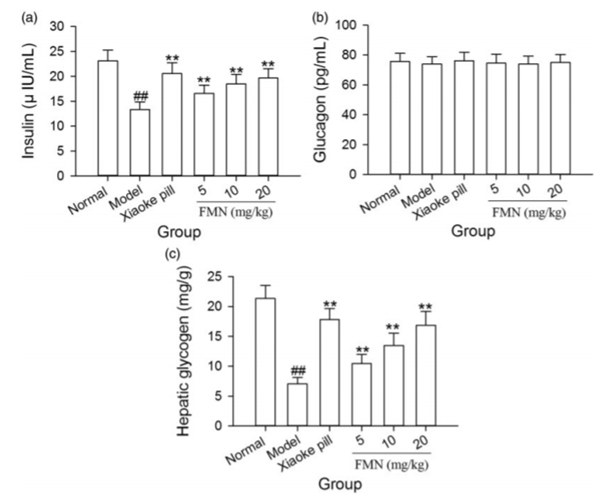Alloxan-Induced Type 1 Diabetes Model
Alloxan is a strong oxidant that can rapidly damage pancreatic β-cells and is commonly used in experimental animals to induce insulin-dependent diabetes (type 1). It works by increasing generation of reactive oxygen species from metabolic reactions in the body, together with massive increase of cytosolic calcium concentration.
Alloxan-induced type 1 diabetes is a model which mimics the process or pathological condition of type 1 diabetes in human. Therefore, this model is often used to study the causes and prevention of type 1 diabetes.
Creative Bioarray, with the suitable model for type 1 diabetes, can provide customers with drug testing and pathogenesis research services to assess the efficacy of drug candidates and study the associated mechanisms of type 1 diabetes.
Species available
- Rat
- Mouse
- Rabbit
Our capabilities
- We establish alloxan-induced Type 1 diabetes model by tail vein injection.
- We use an electronic scale to weigh the mice at different time points during the drugs administration.
- The insulin activity and hepatic glycogen level in rodents are evaluated by Elisa.
Assays available
- Biochemical analysis
- Pathological evaluation
With extensive experience in the field of T1DM, we are confident to help you overcome any upcoming challenges. Our experts are fully capable of customizing our protocols and assays to meet your specific needs. With our help, we wish to facilitate your research with high efficiency.
Study examples
 Figure. 1. FMN increased insulin activity and hepatic glycogen level of mice with type 1 diabetes and did not affect glucagon level of mice with type 1 diabetes. (a) Insulin activity. (b) Glucagon level. (c) Hepatic glycogen level. ##P < 0.01 vs. those in the normal group, **P < 0.01 vs. those in the model group
Figure. 1. FMN increased insulin activity and hepatic glycogen level of mice with type 1 diabetes and did not affect glucagon level of mice with type 1 diabetes. (a) Insulin activity. (b) Glucagon level. (c) Hepatic glycogen level. ##P < 0.01 vs. those in the normal group, **P < 0.01 vs. those in the model group
Quotation and ordering
If you have any special needs or questions regarding our services, please feel free to contact us. We look forward to cooperating with you in the future.
Reference
Qiu G , et al. Formononetin exhibits anti-hyperglycemic activity in alloxan-induced type 1 diabetic mice[J]. Experimental Biology & Medicine, 2016, 242(2):223-230.
For research use only. Not for any other purpose.
Disease Models
- Oncology Models
-
Inflammation & Autoimmune Disease Models
- Rheumatoid Arthritis Models
- Glomerulonephritis Models
- Multiple Sclerosis (MS) Models
- Ocular Inflammation Models
- Sjögren's Syndrome Model
- LPS-induced Acute Lung Injury Model
- Peritonitis Models
- Passive Cutaneous Anaphylaxis Model
- Delayed-Type Hypersensitivity (DTH) Models
- Inflammatory Bowel Disease Models
- Systemic Lupus Erythematosus Animal Models
- Oral Mucositis Model
- Asthma Model
- Sepsis Model
- Psoriasis Model
- Atopic Dermatitis (AD) Model
- Scleroderma Model
- Gouty Arthritis Model
- Carrageenan-Induced Air Pouch Synovitis Model
- Carrageenan-Induced Paw Edema Model
- Experimental Autoimmune Myasthenia Gravis (EAMG) Model
- Graft-versus-host Disease (GvHD) Models
-
Cardiovascular Disease Models
- Surgical Models
- Animal Models of Hypertension
- Venous Thrombosis Model
- Atherosclerosis model
- Cardiac Arrhythmia Model
- Hyperlipoidemia Model
- Doxorubicin-induced Heart Failure Model
- Isoproterenol-induced Heart Failure Model
- Arterial Thrombosis Model
- Pulmonary Arterial Hypertension (PAH) Models
- Heart Failure with Preserved Ejection Fraction (HFpEF) Model
-
Neurological Disease Models
- Alzheimer's Disease Modeling and Assays
- Seizure Models
- Parkinson's Disease Models
- Ischemic Stroke Models
- Acute Spinal Cord Injury (ASCI) Model
- Traumatic Brain Injury (TBI) Model
- Hypoxic-Ischemic Encephalopathy (HIE) Model
- Tourette Syndrome (TS) Model
- Amyotrophic Lateral Sclerosis (ALS) Model
- Huntington's Disease (HD) Model
- Intracerebral hemorrhage (ICH) Models
- Schizophrenia Model
- Pain Models
-
Metabolic Disease Models
- Type 1 Diabetes Mellitus Model
- Type 2 Diabetes Mellitus Model
- Animal Model of Hyperuricemia
-
Nonalcoholic Fatty Liver Disease Model
- High-Fat Diet-Induced Nonalcoholic Fatty Liver Disease (NAFLD) Model
- Methionine and Choline Deficient (MCD) Diet-Induced Nonalcoholic Fatty Liver Disease (NAFLD) Model
- Gubra-Amylin NASH (GAN) Diet-Induced Nonalcoholic Fatty Liver Disease (NAFLD) Model
- Streptozotocin (STZ) Induced Nonalcoholic Fatty Liver Disease (NAFLD) Model
- High Fat Diet-Induced Obesity Model
- Diabetic Foot Ulcer (DFU) Model
- Liver Disease Models
- Rare Disease Models
- Respiratory Disease Models
- Digestive Disease Models
-
Urology Disease Models
- Cisplatin-induced Nephrotoxicity Model
- Unilateral Ureteral Obstruction Model
- 5/6 Nephrectomy Model
- Renal Ischemia-Reperfusion Injury (RIRI) Model
- Diabetic Nephropathy (DN) Models
- Passive Heymann Nephritis (PHN) Model
- Adenine-Induced Chronic Kidney Disease (CKD) Model
- Kidney Stone Model
- Doxorubicin-Induced Nephropathy Model
- Orthotopic Kidney Transplantation Model
- Orthopedic Disease Models
- Ocular Disease Models
- Skin Disease Models
- Infectious Disease Models
- Otology Disease Models